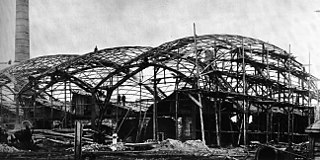Shell
Shell is a general term that encompasses objects that form a space by creating a flat and complete or extensive boundary between inside and outside. So z. B. the atmosphere a shell around the earth or the skin a shell around the human body.
But the objects that humans create and / or with which they surround themselves are often artifacts with a shell character. Their practical value lies in protecting the contents, holding them together and storing them or in marking and delimiting a space with the cover. The practical value of the covers differs from that of other artifacts that are supposed to facilitate human life in a different way: e.g. B. Tools and equipment . Covers also enable the contents to be concealed or kept hidden (concealment). According to the Christian religion, Jesus came to earth veiled in the flesh as God's Son.
etymology
The Common Germanic word shell , like the Old High German Hulla , the Old English Hylla and the Swedish Hölja, is a more commonly used term in the once-upscale language for a cover, a coat , especially a headscarf . Just like pod , they all come from the Indo-European word group around hehlen , which means something like hide, cover, hide (hence the legume ). The name in abundance has been attested since the 16th century and meant something like clothing and food , with abundance meant the sufficient filling of the stomach. Only later (17th century) was abundance understood in its original meaning and the entire expression interpreted as a synonym for abundance.
Examples of cases
- Container in the broadest sense, vessels , housing , container , pouch , bag / suitcase etc.
- As a shell, clothing surrounds the narrowest space around the human body
- Architecture : A building shell surrounds the space in which people stay, do things and store their things.
- Packaging in a figurative sense when cooking (chocolate shell, egg shell)
Shell in architecture
In the field of architecture , the concept of the shell has played an essential role since the beginning of modernity. Architecture is often understood as “ space plus shell”. It is not uncommon for architecture to be defined in terms of its space-creating and space-enveloping function. Sometimes spatial art is used instead of architecture . This task is emphasized especially in modern architecture. In doing so, modern architects often distance themselves from the facade-like , massive and monumental architecture of the 19th century. Instead, architecture is often thought of in terms of the duality of space and shell. The built architecture recedes as a light shell (e.g. curtain walls or light partition walls) behind the architecture as an enclosed space. The load-bearing construction is often taken over by an independent support system, so that the space envelope only appears as a light membrane-like border. This emphasis on the character of the space envelope also emphasizes the proximity of the architecture to other surrounding objects (vessels, clothing, etc.).
However, already in 19th century architecture (e.g. Gottfried Semper , Wladimir Schuchow ) another aspect of the shell appears, namely the idea of understanding the facade of a building as the cladding of the building (“ cladding theory ”). The body of the building is therefore seen as naked, which must be clothed. This alludes to the principle of wrapping and wrapping clothes. This facade architecture has in part been sharply criticized by modern architects. In postmodern architecture, the term “decorated sheds” has been used provocatively since around 1975.
Case in fashion
The interplay of covering and exposing plays an important role in the variations in clothing fashion . Sometimes this game also has an erotic component.
Shell in art
But also in the fine arts, the wrapping character of artefacts and the wrapping and wrapping of objects, spaces and people are repeatedly discussed and artistically interpreted (example: wrapping actions by Christ ).
